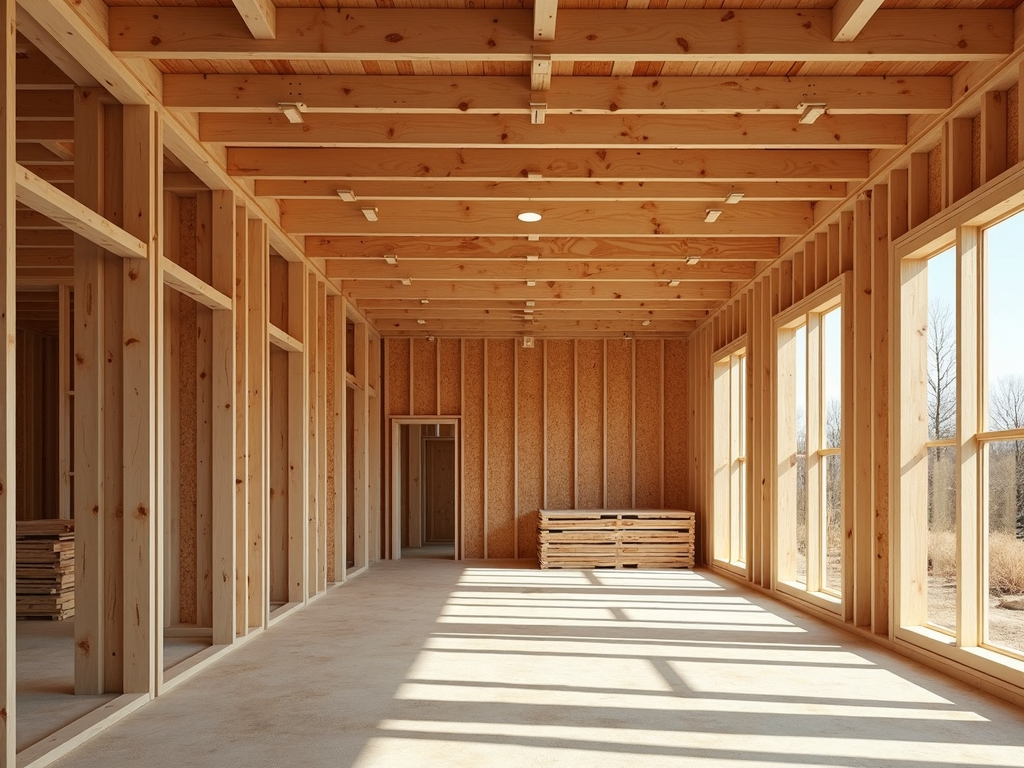Why Wood is More Than Just Trees
Timber, or wood used for building, isn’t just something that comes from trees in the forest. It’s one of the oldest and strongest building materials around. People have been using timber for thousands of years to make homes, bridges, and even big buildings. There’s a good reason for that. Timber can be super strong, easy to work with, and looks nice too.
But there’s more to timber than just chopping down a tree and using the wood right away. Builders and engineers need timber that’s made to hold weight and handle all the forces that push and pull on a building. That’s why structural timber is such a big deal in construction.
Builders often go to trusted suppliers for the best timber. For anyone curious about getting strong timber for building projects, there’s a helpful place to check out. A good example is Structural Timber WA, which shows all the different timber products made for building strong structures.
How Timber Gets So Strong
Timber might seem simple, but a lot happens before it’s ready to hold up a house. Not every piece of wood from a tree is good enough for big buildings. First, timber is cut into planks or beams at a sawmill. Then, it’s dried so it doesn’t bend or twist later. Wet timber can change shape, which could mess up walls or roofs. Drying makes timber stable and ready for construction.
Another thing that makes timber strong is how it’s graded. People check timber for knots, splits, and other marks. These marks don’t always mean timber is weak, but for really important parts of a building, builders want timber that’s clean and solid. Timber with fewer flaws can handle more weight without snapping or cracking.
Sometimes timber is treated with special chemicals. This helps it fight off bugs, mold, or water damage. Builders don’t want timber that rots away inside a wall. Treated timber stays strong for a long time, even if it’s used outside or in places where it might get damp.
Timber vs. Other Building Materials
Some people wonder why timber is still so popular when there are materials like steel and concrete. After all, steel is super strong, and concrete can hold up giant buildings. But timber has its own special benefits.
For one, timber is lighter than steel or concrete. This makes it easier to move around and build with. Workers can carry timber beams without needing big machines every time. In places where getting heavy equipment is hard, timber is perfect.
Timber is also good for the environment. Trees grow back, and timber stores carbon from the air, which helps reduce pollution. Steel and concrete, on the other hand, take a lot of energy to make. Timber buildings leave a smaller footprint on the planet.
Another reason builders like timber is how easy it is to cut and shape. Need a shorter beam? Timber can be cut on-site with saws. Steel takes special tools, and concrete needs forms and time to set. With timber, building can be faster and sometimes cheaper.
And there’s the way timber looks. Even in modern buildings, people like the warm color and feel of wood. It makes spaces feel cozy and welcoming.
Where Timber Fits in Buildings
Timber can be used almost anywhere in a building. It’s in the floors people walk on, the frames that hold up walls, and the roofs overhead. In houses, timber beams and joists are hidden behind walls and ceilings, but they’re working hard to keep everything standing.
In bigger buildings, timber can even be used for tall structures. Timber isn’t only for homes and offices. Bridges, stadiums, and even towers have been built from timber. The material is strong enough to handle big weights and forces, as long as it’s designed right.
Builders also use timber for temporary parts of construction, like scaffolding or forms for pouring concrete. Because it’s light and easy to use, timber makes these jobs safer and faster.
How Timber Helps Keep Buildings Safe
Timber isn’t just strong—it’s flexible. That means it can bend a little without breaking. This is important because buildings move all the time. Wind pushes on them. The ground shakes during earthquakes. Even heavy trucks passing by can make vibrations. Timber can handle these movements without snapping.
Also, timber does surprisingly well in a fire. People think wood burns fast, but thick timber beams actually burn on the outside first, forming a black layer called char. This char protects the wood inside for a while. So timber can stay strong long enough for people to get out safely. Builders plan for this and follow rules to keep buildings safe.
The Future of Timber in Construction
More and more, engineers and builders want to use timber in creative ways. There’s something called mass timber, which means big pieces of wood glued or pressed together. These pieces can be huge, and they’re used in tall buildings instead of steel or concrete.
Mass timber is strong enough for skyscrapers. Plus, it’s lighter, so buildings don’t need as heavy foundations. People are even making wooden bridges and giant halls out of timber. And since timber is natural, it helps make buildings look and feel nice.
In many places, timber suppliers work hard to provide the right kinds of wood for these projects. Structural timber has become one of the most trusted materials for building, and there’s a good chance it will be used even more in the future.
Why Builders Keep Choosing Timber
Timber has been around for centuries, and it’s not going away anytime soon. Builders keep choosing it because it’s strong, easy to work with, and better for the environment. Whether it’s for houses, bridges, or tall buildings, timber does the job well.
The next time someone looks at a house or a big building, they might not see the timber beams hidden inside. But those pieces of wood are working hard, keeping everything safe and standing tall.
Timber proves that even something as simple as wood can be a hero in building strong structures. And as people keep finding new ways to use it, timber’s future in construction looks bright.
Isn’t it cool how trees growing in the forest end up holding up entire cities? Timber might just be one of the most important building materials of all.

